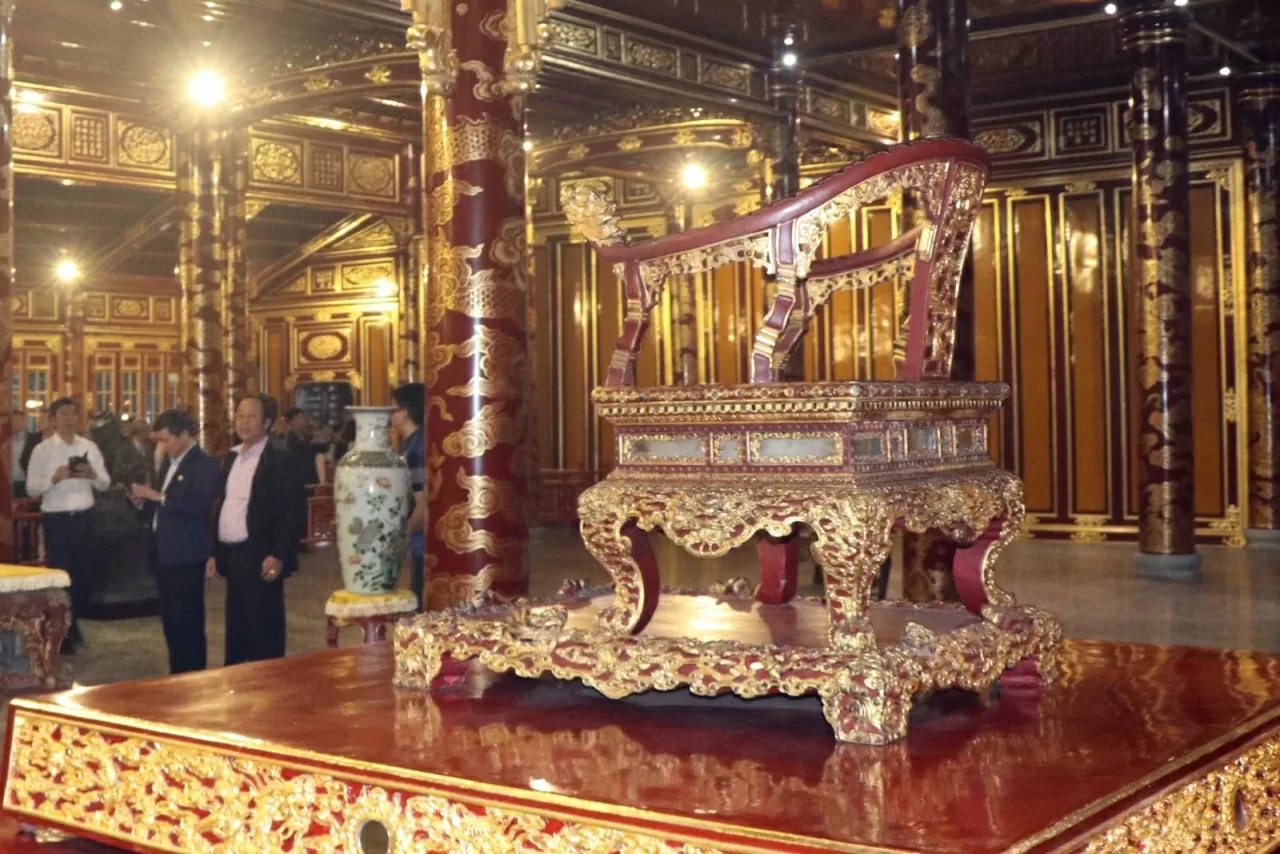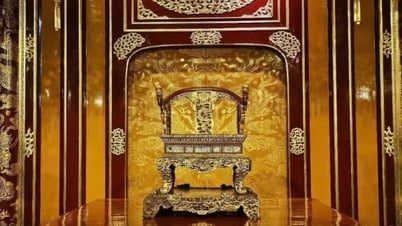 |
| The throne - a national treasure in the central position of Thai Hoa Palace. (Source: VNA) |
Under the article titled The historical value of the throne that was just broken in VnExpress newspaper, reader Trung Nguyen asked: Why is the national treasure so poorly protected?
Below, another reader responded: No one has ever dared to do that before. The throne is so heavy, who would dare to steal it? There have always been millions of people visiting and following the rules. This is just a “rare event.”
It is true that there has been no problem so far, but in just one isolated case, the Nguyen Dynasty throne was destroyed right in the Thai Hoa Palace. And that is not the first time that a Vietnamese heritage has been damaged due to subjectivity.
In 2013, the last ancient Lang house of the Muong people and 200 artifacts in Hoa Binh province were burned down and completely destroyed because... tourists arbitrarily lit fires to roast corn. More than a month ago, the relic of the Waterway Stele in Cam Pho ward (Hoi An) was vandalized. The letters and carvings on the surface of the stone stele were chiseled away, causing almost complete damage.
In many countries, heritage sites are also frequent targets. In mid-2023, two women from an environmental group smeared red paint and pressed their hands on Claude Monet’s “The Artist’s Garden at Giverny.” A year earlier, protesters threw tomato soup on Van Gogh’s masterpiece “Sunflowers” in England. Fortunately, both were protected by specialized glass.
Most of Vietnam’s heritage still relies on a manual protection model: barriers, prohibition signs, and guards “running after” incidents. With the Nguyen Dynasty throne - a national treasure - placed in the middle of Thai Hoa Palace with a low fence, no protective glass or motion sensors. The close distance between the artifacts and visitors makes it impossible for security personnel to react in time to “rare” cases, causing consequences that are difficult to overcome.
Director of the Department of Cultural Heritage Le Thi Thu Hien shared: "Current law requires national treasures to be preserved under special regimes. However, in reality, the regulations are not clear and specific. In addition, the budget and financial conditions of localities are still limited."
Therefore, it is not feasible to require relics to immediately equip themselves with tempered glass and sensors to control visitors. Moreover, no one wants to see a throne in a glass cage, let alone a replica of a treasure, even a 1:1 replica. However, it is not necessary to bring visitors too close to the artifacts. Managers can reorganize the tour route, only letting visitors stand and admire the facade - as palaces in China, Korea, Japan, Germany... have done for a long time.
Fortunately, no one was injured in the incident, nor were any other artifacts destroyed during the struggle to control the subject. The throne can be restored to its original state, and will not follow the path of "complete destruction" of the Lang houses and ancient steles mentioned above. However, it must be affirmed that allowing a psychopath to freely go through the ticket purchase, ticket checking, security check... from Ngo Mon to Thai Hoa Palace is a loophole. Even after being taken to a separate area because of unusual signs, the subject can still return to the scene and commit acts of vandalism.
It is true that preserving heritage requires raising people's sense of responsibility. But that is not and cannot be the only way. At this time, besides restoring the throne, let's look back at the loopholes in preservation. The designs of exhibition spaces and scenarios for protecting artifacts are showing weaknesses, making heritage face the risk of being vandalized and stolen. If we want treasures to last through history, we need to prepare for things... that no one thinks will happen.
Source: https://baoquocte.vn/bao-ve-di-san-dung-de-mat-bo-roi-cho-la-chuyen-hy-huu-315922.html

































































































Comment (0)